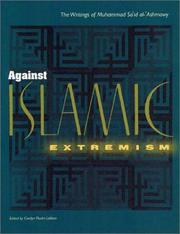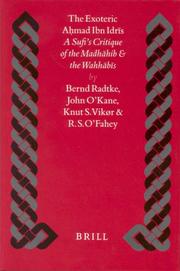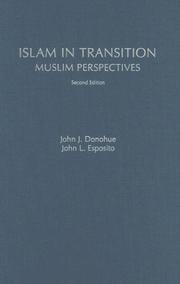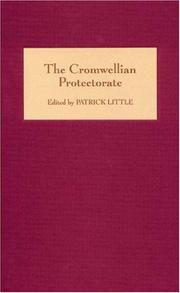| Listing 1 - 10 of 21 | << page >> |
Sort by
|
Book
Year: 2020 Publisher: [Place of publication not identified] : [Amsterdam University Press],
Abstract | Keywords | Export | Availability | Bookmark
 Loading...
Loading...Choose an application
- Reference Manager
- EndNote
- RefWorks (Direct export to RefWorks)
The varied career of Adam Easton (c. 1330-1397) led him from Norwich Cathedral Priory to Oxford, Avignon and Rome. Not only a monk of the Benedictine Order, he was also a scholar, theologian, diplomat and cardinal, and his work reflects the breadth of this multifaceted background. This volume presents recent research on Easton's oeuvre, his diplomacy, and the books that accompanied him on his travels. Amongst the works addressed in this volume are Easton's Defensorium ecclesiastice potestatis, his Defensorium S. Birgittae and his Office for the Feast of the Visitation. Further new evidence is also offered on his testimony during the Great Schism, on the dating of his copy of De pauperie Salvatoris, while two reassessments are made of his likeness, including his sepulchral monument at S. Cecilia in Rome and the Lutterwork wall painting. Finally, a catalogue of Easton's important manuscript collection is also provided.

ISBN: 0813025435 Year: 2001 Publisher: Gainesville University press of Florida
Abstract | Keywords | Export | Availability | Bookmark
 Loading...
Loading...Choose an application
- Reference Manager
- EndNote
- RefWorks (Direct export to RefWorks)
Islam Extremism --- Muhammad Sa'id al-'Ashmawy --- holy war --- intolerance --- violence --- Muslim thought --- Islamic law --- religious reform --- Judaism --- Christianity --- religion and politics

ISBN: 9004113754 9004492003 Year: 2000 Publisher: Leiden : E.J. Brill,
Abstract | Keywords | Export | Availability | Bookmark
 Loading...
Loading...Choose an application
- Reference Manager
- EndNote
- RefWorks (Direct export to RefWorks)
Sufism --- Wahhabiyah --- Najdi doctrine --- Wahabism --- Wahhabi mission --- Wahhabi movement --- Wahhabi movement (India) --- Wahhabi religious reform movement --- Wahhabis --- Wahhabism --- Wahhabiyya --- Islamic sects --- Islamic renewal --- Sofism --- Mysticism --- Islam --- Wahhābīyah

ISBN: 9780195174304 9780195174311 0195174305 0195174313 0197669484 Year: 2007 Publisher: New York (N.Y.) : Oxford university press,
Abstract | Keywords | Export | Availability | Bookmark
 Loading...
Loading...Choose an application
- Reference Manager
- EndNote
- RefWorks (Direct export to RefWorks)
9/11 and continued acts of global terrorism have challenged the understanding of academic experts, policymakers, and students, Muslims and non-Muslims alike. Critical questions have been raised about Islam and Muslim politics in the modern world: Are Islam and modernity compatible? Is Islam in need of and capable of reform? What do Islam and what do Muslims have to say about globalization, democracy, human rights, women, jihad, violence, terrorism, and suicide bombing? Thoroughly revised and updated in this second edition, Islam in Transition: Muslim Perspectives responds to these and other questions, taking into account the myriad of changes and challenges that Islam and Muslims have experienced over the last twenty years. Featuring numerous contemporary writings, fifty percent of which are new to this edition, it provides a point of entry into the various and changing dynamics of Muslim discourse and politics. This volume also bridges the nineteenth and the twenty-first centuries by retaining relevant classic selections from the first edition--by a diverse group of contributors from the Middle East, Southeast Asia, Europe, and the U.S.--that offer historical background. Ideal for courses on Islam, politics in Islam, and Middle Eastern history, Islam in Transition: Muslim Perspectives, Second Edition, presents a wide range of viewpoints from a cross-section of Muslim intellectuals and religious leaders, from secular to devout, traditionalist to reformist, and moderate to extremist. The essays address key issues including Islam and nationalism, socialism, the secular state, economics, modernization, democracy, women, jihad, violence, terrorism, suicide bombing, globalization, and civilizational dialogue.
Islam --- Religious awakening --- Réveil religieux --- Islam. --- Histoire --- Geografie --- Sociale geografie --- Maatschappij. --- Réveil religieux --- -Religious awakening --- -297 --- Awakening, Religious --- Awakening (Religion) --- 297 --- Islam. Mohammedanisme --- Islam - 20th century --- Religious awakening - Islam --- intellectualism --- 9-11 --- terrorism --- Muslim politics --- modernity --- religious reform --- globalization --- democracy --- human rights --- gender issues --- jihad --- violence --- suicide bombing
Book
ISBN: 9780521119382 9780511760785 9781107660557 9780511776366 0511776365 9780511772719 0511772718 9780511774843 0511774842 0511760787 0511850247 1107203465 1282723367 9786612723360 0511775601 0511773781 0521119383 1107660556 Year: 2010 Publisher: New York : Cambridge University Press,
Abstract | Keywords | Export | Availability | Bookmark
 Loading...
Loading...Choose an application
- Reference Manager
- EndNote
- RefWorks (Direct export to RefWorks)
In contemporary Thai Buddhism, the burgeoning popularity of vipassanā meditation is dramatically impacting the lives of those most closely involved with its practice: monks and mae chee (lay nuns) living in monastic communities. For them, meditation becomes a central focus of life and a way to transform the self. This ethnographic account of a thriving Northern Thai monastery examines meditation in detail, and explores the subjective signification of monastic duties and ascetic practices. Drawing on fieldwork done both as an analytical observer and as a full participant in the life of the monastery, Joanna Cook analyzes the motivation and experience of renouncers, and shows what effect meditative practices have on individuals and community organization. The particular focus on the status of mae chee - part lay, part monastic - provides a fresh insight into social relationships and gender hierarchy within the context of the monastery.
Monastic and religious life (Buddhism) --- Meditation --- Mental prayer --- Prayer, Mental --- Prayer --- Spiritual life --- Contemplation --- Monastic and religious life (Lamaism) --- Buddhist monasticism and religious orders --- Religious life --- Buddhism --- Arts and Humanities --- Religion --- meditation --- monasticism --- asceticism --- Thailand --- religious reform --- the monastic community --- ethics --- language --- monastic duty --- mindfulness --- cognitive space --- money --- mae chee --- reciprocity --- hierarchy --- gender --- monasticization --- the ascetic interiority of non-self
Book
ISBN: 9004293280 9789004293281 9789004293014 9004293019 Year: 2015 Publisher: Leiden, Netherlands ; Boston, [Massachusetts] : Brill,
Abstract | Keywords | Export | Availability | Bookmark
 Loading...
Loading...Choose an application
- Reference Manager
- EndNote
- RefWorks (Direct export to RefWorks)
In The Wahhabis seen through European Eyes (1772-1830) Giovanni Bonacina offers an account of the early reactions in Europe to the rise of the Wahhabi movement in Arabia. Commonly pictured nowadays as a form of Muslim fundamentalism, the Wahhabis appeared to many European witnesses as the creators of a deistic revolution with serious political consequences for the Ottoman ancien regime. They were seen either in the light of contemporary events in France, or as Islamic theological reformers in the mould of Calvin, opposing an established church and devotional traditions. These audacious but fascinating attempts to interpret the unknown by way of the better known are illustrated in Bonacina’s book.
Wahhābīyah --- Public opinion --- Opinion, Public --- Perception, Public --- Popular opinion --- Public perception --- Public perceptions --- Judgment --- Social psychology --- Attitude (Psychology) --- Focus groups --- Reputation --- Najdi doctrine --- Wahabism --- Wahhabi mission --- Wahhabi movement --- Wahhabi movement (India) --- Wahhabi religious reform movement --- Wahhabis --- Wahhabism --- Wahhabiyya --- Islamic sects --- Islamic renewal --- History. --- History --- Europe --- Intellectual life
Book
ISBN: 9781783276851 9781800104938 1783276851 1800104936 Year: 2022 Publisher: Woodbridge, Suffolk : The Boydell Press,
Abstract | Keywords | Export | Availability | Bookmark
 Loading...
Loading...Choose an application
- Reference Manager
- EndNote
- RefWorks (Direct export to RefWorks)
An exploration of how ©†thelwold and those he influenced deployed the promotion of saints to implement religious reform.
Saints --- Monasticism and religious orders --- Monachisme et ordres religieux --- Friendship. --- Cult --- History --- Histoire --- Middle Ages. --- Cult. --- Aethelwold, --- Friends and associates. --- To 1500. --- England. --- Ethelwoldus ep. Wintoniensis --- Angleterre --- Culte des saints --- To 1500 --- Anglo-Saxon history. --- Bishop Æthelwold. --- early medieval England. --- historical context. --- political influence. --- religious belief. --- religious power. --- religious reform. --- saints' cults.

ISBN: 1843832828 9781843832829 9786612185250 128218525X 1846155282 Year: 2007 Publisher: Suffolk : Boydell & Brewer,
Abstract | Keywords | Export | Availability | Bookmark
 Loading...
Loading...Choose an application
- Reference Manager
- EndNote
- RefWorks (Direct export to RefWorks)
The Protectorate is arguably the Cinderella of Interregnum studies: it lacks the immediate drama of the Regicide, the Republic or the Restoration, and is often dismissed as a 'retreat from revolution', a short period of conservative rule before the inevitable return of the Stuarts. The essays in this volume present new research that challenges this view. They argue instead that the Protectorate was dynamic and progressive, even if the policies put forward were not always successful, and often created further tensions within the government and between Whitehall and the localities. Particular topics include studies of Oliver Cromwell and his relationship with Parliament, and the awkward position inherited by his son, Richard; the role of art and architecture in creating a splendid protectoral court; and the important part played by the council, as a law-making body, as a political cockpit, and as part of a hierarchy of government covering not just England but also Ireland and Scotland. There are also investigations of the reactions to Cromwellian rule in Wales, in the towns and cities of the Severn/Avon basin, and in the local communities of England faced with a far-reaching programme of religious reform. PATRICK LITTLE is Senior Research Fellow at the History of Parliament Trust. Contributors: BARRY COWARD, DAVID L. SMITH, JASON PEACEY, PAUL HUNNEYBALL, BLAIR WORDEN, PETER GAUNT, LLOYD BOWEN, STEPHEN K. ROBERTS, CHRISTOPHER DURSTON.
Cromwell, Oliver, --- Great Britain --- History --- Politics and government --- Cromwell, Oliver --- Cromwel, Oliver --- HISTORY / Modern / General. --- History of Parliament Trust. --- Interregnum studies. --- Oliver Cromwell. --- PATRICK LITTLE. --- Protectorate. --- Richard Cromwell. --- Severn/Avon basin. --- Stuarts. --- Wales. --- architecture. --- art. --- conservative rule. --- council. --- law-making body. --- religious reform.
Book
ISBN: 1782041087 1322063575 1843838575 Year: 2023 Publisher: Woodbridge : The Boydell Press,
Abstract | Keywords | Export | Availability | Bookmark
 Loading...
Loading...Choose an application
- Reference Manager
- EndNote
- RefWorks (Direct export to RefWorks)
The articles in this volume focus on aspects of the history of the duchy of Normandy. Their topics include arguments for a new approach to the history of early Normandy, Norman abbesses, and the proposition that Robert Curthose was effectively written out of the duchy's history.
Great Britain --- History --- Anglo-Saxons --- Normans --- HISTORY / Medieval. --- Anglo-Norman Studies. --- Anglo-Norman. --- Architectural Historian. --- Aristocratic Family. --- Battle Conference. --- Bayeux Tapestry. --- Bohemond of Antioch. --- Campaign of 1066. --- Criminal Law. --- Duchy of Normandy. --- Medieval History. --- Norman Studies. --- Normandy. --- Religious Reform. --- Robert Curthose. --- Scotland. --- Twelfth-Century Poetry.
Book
ISBN: 022627831X Year: 2015 Publisher: Chicago : University of Chicago Press,
Abstract | Keywords | Export | Availability | Bookmark
 Loading...
Loading...Choose an application
- Reference Manager
- EndNote
- RefWorks (Direct export to RefWorks)
In the sixteenth and seventeenth centuries, competing scholarly communities sought to define a Spain that was, at least officially, entirely Christian, even if many suspected that newer converts from Islam and Judaism were Christian in name only. Unlike previous books on conversion in early modern Spain, however, Parables of Coercion focuses not on the experience of the converts themselves, but rather on how questions surrounding conversion drove religious reform and scholarly innovation. In its careful examination of how Spanish authors transformed the history of scholarship through debate about forced religious conversion, Parables of Coercion makes us rethink what we mean by tolerance and intolerance, and shows that debates about forced conversion and assimilation were also disputes over the methods and practices that demarcated one scholarly discipline from another.
Moriscos. --- Muslims --- Jews --- Spanish literature --- Conversion to Christianity --- History and criticism. --- Catholic Church --- History. --- Spain --- Intellectual life --- conversion, religion, islam, spain, history, christianity, pluralism, judaism, religious reform, scholarship, tolerance, intolerance, assimilation, moriscos, jews, muslims, catholic church, literature, spirituality, belief, nonfiction, heresy, theology, canon, philology, orthodoxy, ritual, faith, political science, politics, economics, iberian studies, new world, secularism.
| Listing 1 - 10 of 21 | << page >> |
Sort by
|

 Search
Search Feedback
Feedback About UniCat
About UniCat  Help
Help News
News